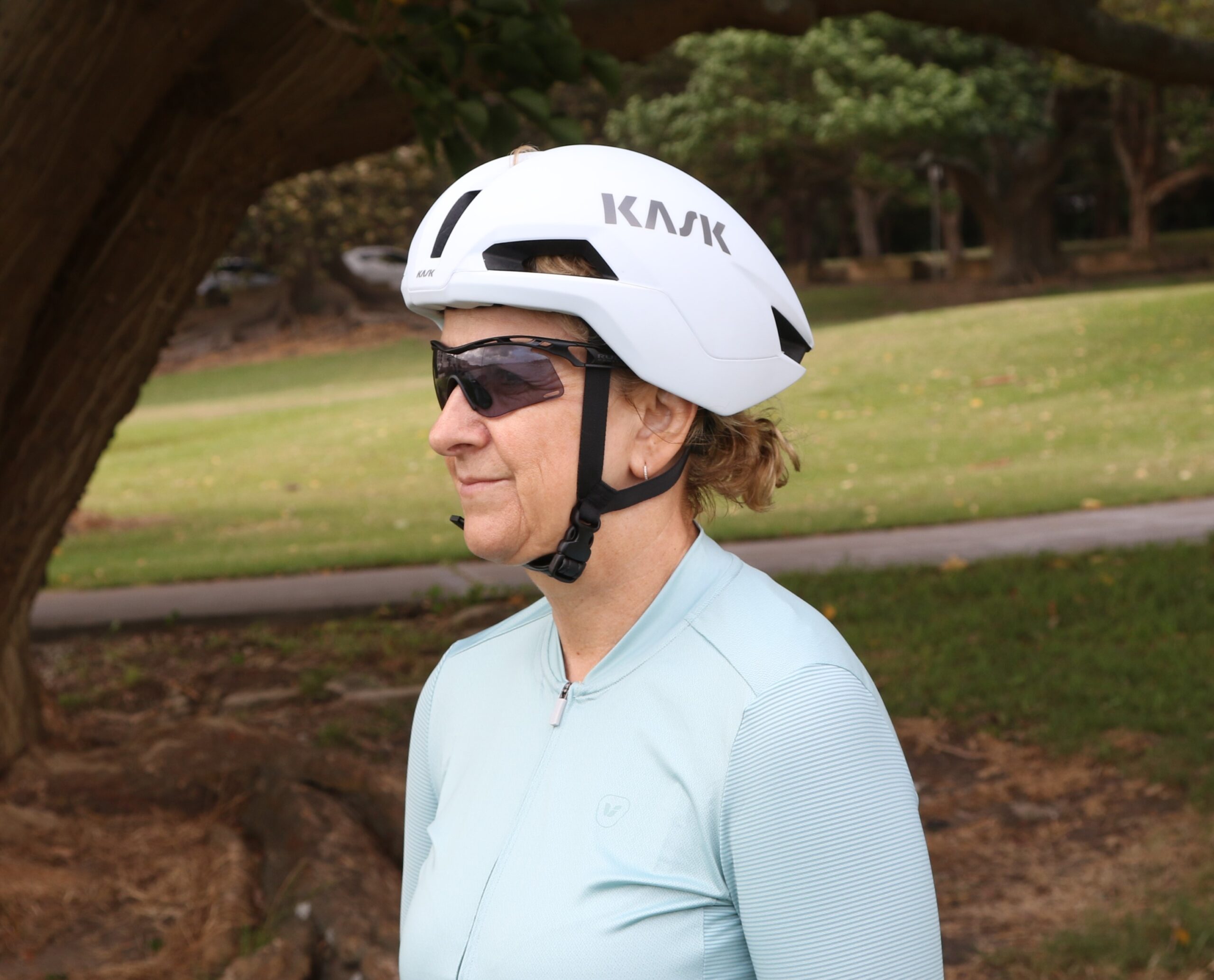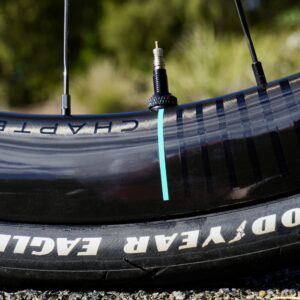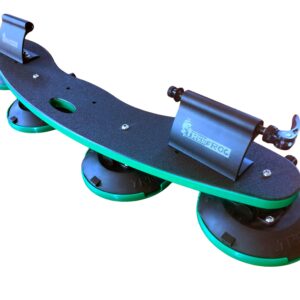Described as aero perfection, Kask says its new helmet is designed to guarantee minimal drag while delivering optimal comfort. It’s firmly targeted at road and track cyclists and triathletes who seek aerodynamic advantages over their competitors and fellow riders.
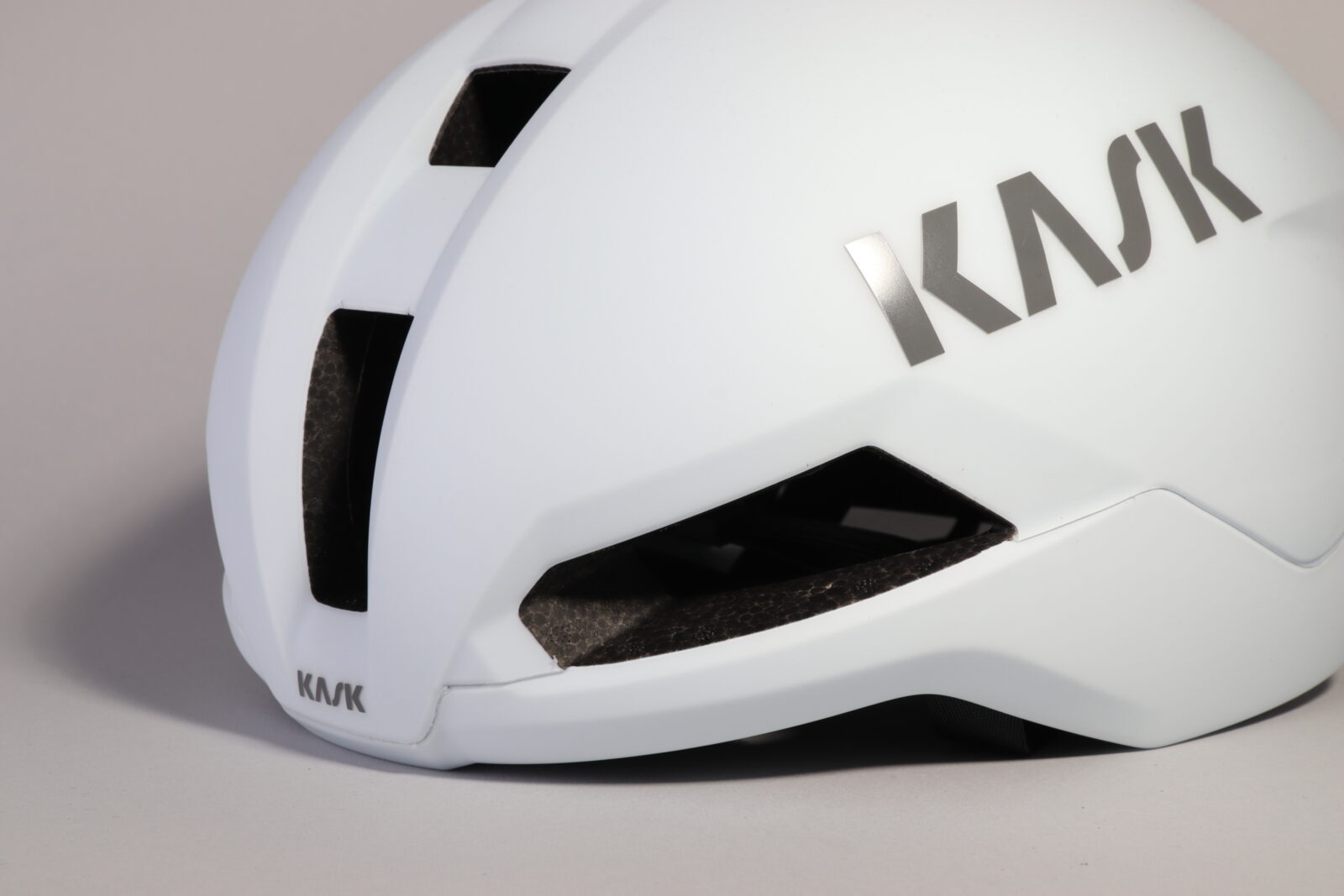
Kask says that the development of this aero helmet utilised complex computational fluid dynamics simulations, which measured aerodynamic performance, ventilation, and thermoregulation. Now, that’s a huge mouthful of words, but in short, the company has developed an impressive aero helmet.
Kask claims that the development process has resulted in a 35 per cent lower drag and a 19 per cent increase in ventilation compared to the Utopia Y, the existing Kask aero model. And while it’s not possible to verify these claims, the helmet really looks the goods on aerodynamics.
The first thing I noticed about the new Nirvana is the lower sides, or ‘ear covers’ as Kask calls them, that cover the top of your ears. I assume this is to make it more aero because ears tend to stick out and produce drag, but it has the added benefit of being warmer in cooler weather. My usual helmet is a more conventional design that doesn’t cover my ears in cold weather, so I wear a headband to keep my ears warm.
The next thing I found was the waffle-type pads on the inside of the helmet. Kask says this multi-pod technology, 3D-printed internal padding is designed to withstand linear and rotational impacts better. It functions isotropically, meaning it behaves the same way in whichever direction the force is applied. And while I didn’t try out its resistance to impact, for obvious reasons, it looks and feels like it would withstand significant force.

The Nirvana also has internal channelling that runs either side of the waffle padding from front to rear, allowing air to flow through. I experienced this while riding with the helmet, and despite its significant coverage, my head did not overheat. Kask says the vent arrangement and channel shaping direct the airflow through the helmet at high speed and out of the exhaust ports on the back of the shell.
The channelling is complemented by merino wool padding positioned at the front and sides of the helmet, which makes it comfortable and absorbs sweat.
Like all reputable helmet manufacturers, Kask places a high priority on safety. After all, that’s the number one role of a helmet. The Nirvana is designed in accordance with the KASK Rotational Impact WG11 Test, an internal testing regime adopted by the company that measures the performance of its helmets against rotational impacts.
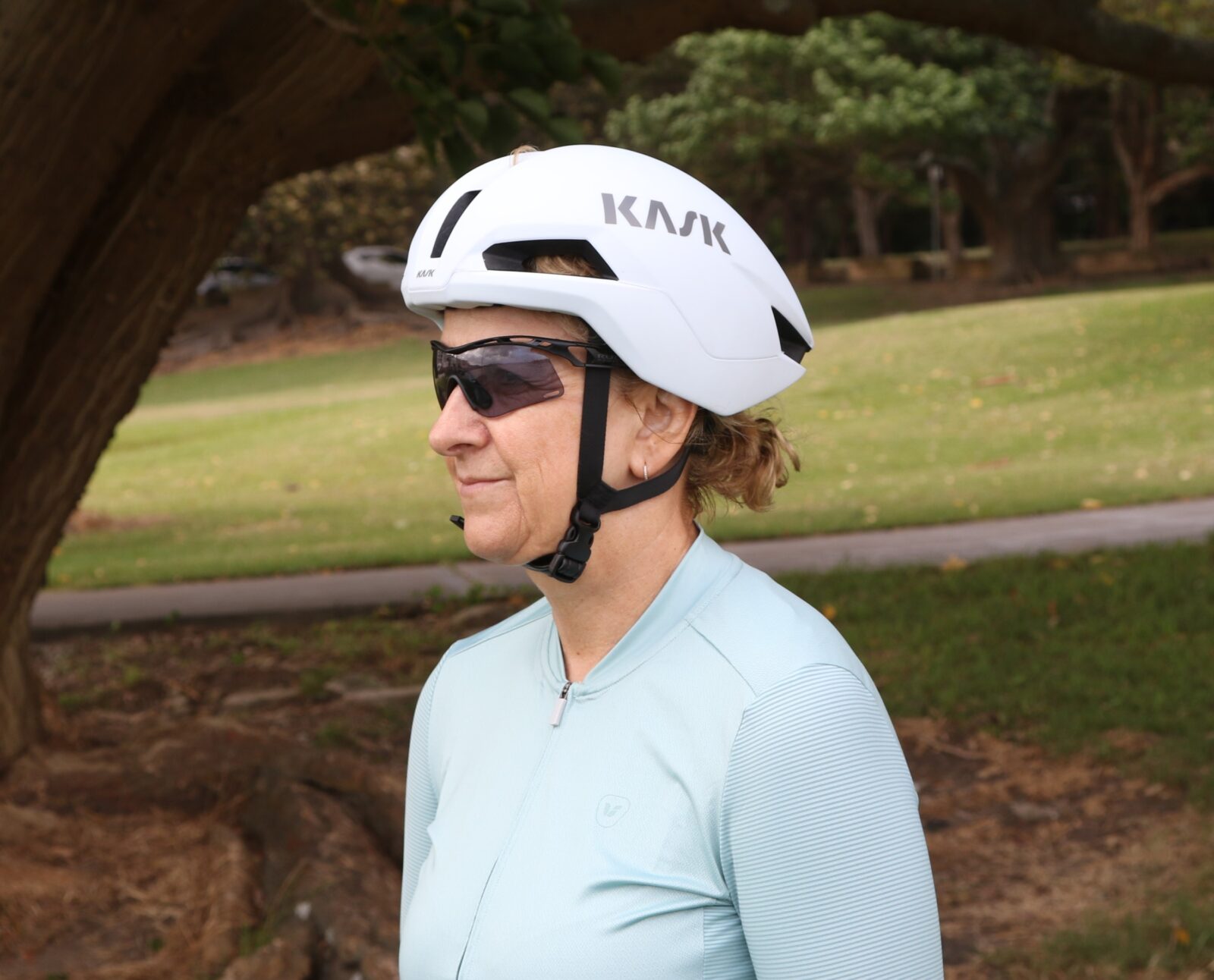
The Nirvana is adjusted using the Kask Octofit+ system which provides micro adjustments via the rear dial, as well as vertical adjustment of the fitting system. I assume this allows for different sizes and shapes of heads. It also allows people with their hair tied up, like me, to provide a larger gap to pull a ponytail or plait through. It certainly felt good on my head and I also like the faux leather strap that felt substantial under my chin.
To round out its features, the Nirvana also incorporates a sunglasses port at the front and a reflective graphic at the rear.
It is, however, a substantial investment at $570, but as a high-quality helmet, if it meets its aerodynamic claims, could gain seconds over your competitors.
Nirvana is available in traditional Black Matt and White Matt (tested), as well as in three new Kask colourways, Cherry Burst, Blueberry Fade, and Ultraviolet, which feature graduated shading.
Weighing in at 270 grams (size M), Nirvana is available in sizes M and L at a recommended retail price of $570.
Nicola Rutzou – a long-time contributor and, most recently, the editor of Bicycling Australia. Nicola is a keen Sydney-based road cyclist who writes reviews, news, and destination pieces, as well as the weekly e-newsletter for BA online.
